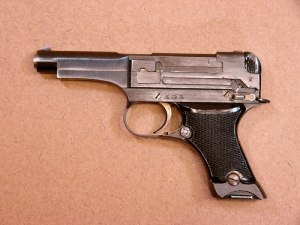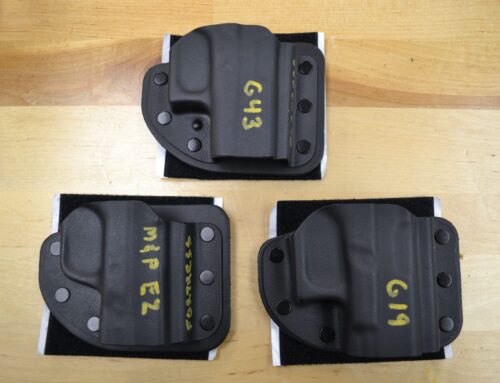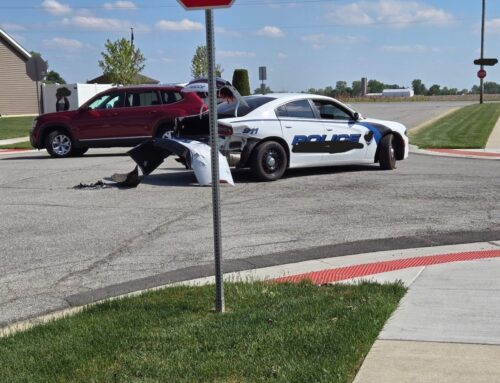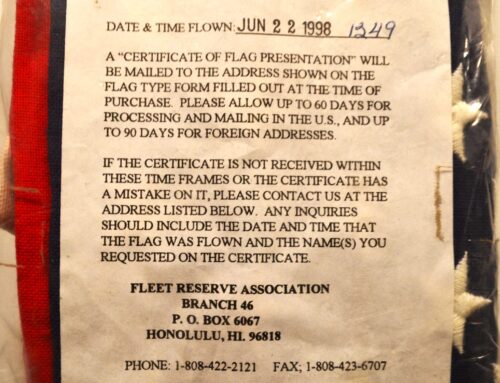Q: Frank, could you address the idea that guns just go off? On the news they say, ‘the gun accidentally went off.’ I would love to post something from an expert debunking this scary thought!
A: First, I hardly would refer to myself as an “expert.” Dan Shea over at Small Arms Review pointed out decades ago that there really are no experts in any subject, just Reasonably Knowledgeable Individuals, or RKI’s. I like that concept as it keep all of us honest and locked into the permanent role of student.
In answer to your question, the vast majority of handguns manufactured in the last 100-years are certified as drop safe. Meaning, they have, in a laboratory, been loaded with a primed case and test dropped onto concrete from varying angles to determine if they will fire. The Department of Justice Height Standard is 1-meter + 1cm; states such as MA and CA have their own standards (of course.) Some firearms, however, are not drop safe. The old single action Colt revolvers we’re used to seeing in all the Hollywood westerns are on that list. It was common practice in those days to carry an empty chamber under the hammer to prevent an accidental discharge of the pistol should it be dropped and fall directly on the hammer. Along with those, there are pistols like the 1903 Colt .32, and the first batch of Colt 1911 pistols up until 1930, and then again from the onset of WWII till the Series 80 1911’s went into production. The old-style 1911 pistols can have an “inertia discharge”, meaning you drop the gun and it hits the ground in just the right way that the weight of the firing pin overcomes the firing pin spring pressure and strikes the primer of the chambered round. This is a very rare occurrence on a 1911, and is usually kept at bay by replacement of the firing pin spring every 4000 rounds, or so.
Most non-drop safe pistols are rare, and for the most part museum pieces that rarely see the light of day let alone get used for serious purposes. However, as a historical side note, the Israeli Army policy is to carry pistols without a chambered round. This is a holdover from the first few years of the State of Israel’s founding when there was an arms embargo placed on them. Most of the guns that made it into Israel were smuggled donations, which resulted in a mix of second hand throwaways, and drop safe and non-drop safe firearms. So, since one never knew what one would be issued, and training was non-existent, a policy was set to keep the chambers of all holstered pistols empty. As bureaucracy would have it, it’s still policy in Israel today – Even if you’re carrying a Glock!
 |
|
Nambu Type 94 |
There are rare pistols such as the Japanese Nambu Type 94 pistol, which is a WWII era gun with an exposed sear. This usually resulted in the pistol discharging when being holstered, causing a large portion of the Japanese officers who carried it to have a bullet wound crease down the side of their leg. They are an absolute death trap – And should anyone find themselves in the presence of one, DO NOT LOAD IT!
Also, most common sporting shotguns like the Remington and Mossberg pump action shotguns are not drop safe. They have no internal firing pin block, but only a simple trigger block safety. This can result in an inertia discharge of the gun if dropped or struck directly on the buttstock with a large enough force. One of the most common hunting accidents is a shotgun being dropped butt first from a tree stand and discharging as it hits the ground, thus wounding the hunter above. Because of this, in our shotgun courses we carry our shotguns slung with an empty chamber, and only chamber a round when immediately deploying the gun towards a threat. With defensive long guns, one may have to physically fight to retain the weapon and use it to strike the attacker, hence our empty chamber policy during shotgun carry.
All that being said, the odds of ANY gun firing because it was dropped on the ground are very slim, and the vast majority of pistols we see hit the ground and discharge in movies are drop safe guns that would not do so in real life. And the odds of a gun firing without being dropped are a statistical zero.
Where all this fits with your question is this: When it is reported that a person’s gun “just went off”, it didn’t. All claims of Accidental Discharges (AD’s) are investigated exactly as that. However, once investigated, 99.9999999999999999999999% of them prove to be Negligent Discharges (ND’s.) Idiot had his greasy finger wrapped around the trigger, pressed it, and the gun worked just as advertised. Once in a while a foreign object gets tangled in the trigger, but it all still comes down to human error and/or improper gun handling. Most of the time when there is an ND, the victim(s) will claim that they didn’t do anything to cause it, and in their minds they are absolutely correct! Most people do not know or understand that they interacted with the gun to cause it to fire, and they will honestly believe that it “just went off.” But we know better, and once the facts are established it is proven as such.
That’s not to say there could not be a 1 in a-billion chance of a mechanical malfunction of a gun, but it’s rare. It’s not unheard of like a unicorn, but it is much rarer than a white rhino. The idea of a gun simply discharging as it sits on a table, or even in a person’s hand, without the trigger being depressed, is a fallacy. It just doesn’t happen.
We know that most ND’s occur under one of three conditions: distraction, fatigue or ignorance. It is because of these factors that we recommend everyone – and we mean EVERYONE – take a gun safety class. We also recommend that all gun owners own and use copy of the Safe Direction bag manufactured by Steve Camp of the Ravelin Group. The Safe Direction will not prevent our ND’s, but it will CONTAIN them.
-Frank
Ask Fortress your firearms or training related question by emailing it to: info@fortressdefense.com






Leave A Comment
You must be logged in to post a comment.